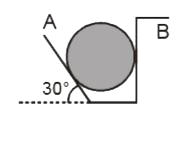Contact forces are
Magnetic force
Frictional force
Gravitational force
Muscular force
Step-by-Step Solution:
1. Understanding Contact Forces:
- Contact forces are defined as forces that occur when two objects are physically touching each other. They require the objects to be in contact to exert a force.
2. Examples of Contact Forces:
- Muscular Force: This is the force exerted by muscles when we push or pull an object. For example, when you push a box, your muscles are applying a muscular force, and you must be in contact with the box to exert this force.
- Frictional Force: This force opposes the motion of an object when it is in contact with another surface. For instance, when you slide a book across a table, friction acts between the book and the table.
3. Non-Contact Forces:
- It is important to differentiate contact forces from non-contact forces. Non-contact forces, such as gravitational and magnetic forces, can act at a distance without the need for physical contact. For example, magnets can attract or repel each other even when they are not touching.
4. Identifying Contact Forces:
- In the context of the question, we need to identify which forces from the given options are contact forces. Based on our understanding:
- Frictional Force: Yes, this is a contact force.
- Muscular Force: Yes, this is also a contact force.
- Magnetic Force: No, this is a non-contact force.
- Gravitational Force: No, this is also a non-contact force.
5. Conclusion:
- The contact forces among the options are Frictional Force and Muscular Force.
- Contact forces are defined as forces that occur when two objects are physically touching each other. They require the objects to be in contact to exert a force.
- Muscular Force: This is the force exerted by muscles when we push or pull an object. For example, when you push a box, your muscles are applying a muscular force, and you must be in contact with the box to exert this force.
- Frictional Force: This force opposes the motion of an object when it is in contact with another surface. For instance, when you slide a book across a table, friction acts between the book and the table.
- It is important to differentiate contact forces from non-contact forces. Non-contact forces, such as gravitational and magnetic forces, can act at a distance without the need for physical contact. For example, magnets can attract or repel each other even when they are not touching.
- In the context of the question, we need to identify which forces from the given options are contact forces. Based on our understanding:
- Frictional Force: Yes, this is a contact force.
- Muscular Force: Yes, this is also a contact force.
- Magnetic Force: No, this is a non-contact force.
- Gravitational Force: No, this is also a non-contact force.
- The contact forces among the options are Frictional Force and Muscular Force.
Topper's Solved these Questions
Similar Questions
The 50kg homogenous smooth sphere rests on the 30∘ incline A and bears against the smooth vertical wall B.Calculate the contact forces at A and B.

View SolutionWhat are contact forces? State different contact forces. What are non-contact forces? Explain different types of non-contact forces.
View Solution
Knowledge Check
Which contact force is responsible for changing the state of motion of an object?
AMagnetic forceBFrictional forceCMuscular forceDElectrostatic forceThe 50kg homogenous smooth sphere rests on the 30∘ incline A and bears against the smooth vertical wall B.Calculate the contact forces at A and B.
 ANA=1000√3N,NB=500√3 NBNA=1000√3N,NB=1000√3NCNA=500√3N,NB=500√3NDNA=500√3N,NB=1000√3N
ANA=1000√3N,NB=500√3 NBNA=1000√3N,NB=1000√3NCNA=500√3N,NB=500√3NDNA=500√3N,NB=1000√3NAssertion: Magnitude of the contact force is always greater than the magnitude of frictional force.
Reason: Contact force is the resultant of the friction force and normal reaction.AIf both assertion & Reason are True & the Reason is a corrrect explanation of the Asserion.BIf both Assertion & Reason are True but Reason is not correct explanation of the Assertion.CIf Assertion is Trie but the Reason is False.DIf both Assertion & Reason are false
Answer the following questions
Name any one contact force and non-contact force
View SolutionWhich of the following are non - contact forces ?
Magnetic force, Frictional force, Gravitional force, Muscular force, Electrostatic force.
View SolutionIn the system shown in figure, the block A is released from rest. Find

Contact force between ‘A’ and ‘B’.
View SolutionWhich of the following are contact forces ?
A. Friction B. Gravitational force C. Magnetic force D. Muscular force
View SolutionAssertion: Frictional force is the component of contact force parallel to the surface.
Reason: Friction force always opposes the motion of a body.
View Solution
